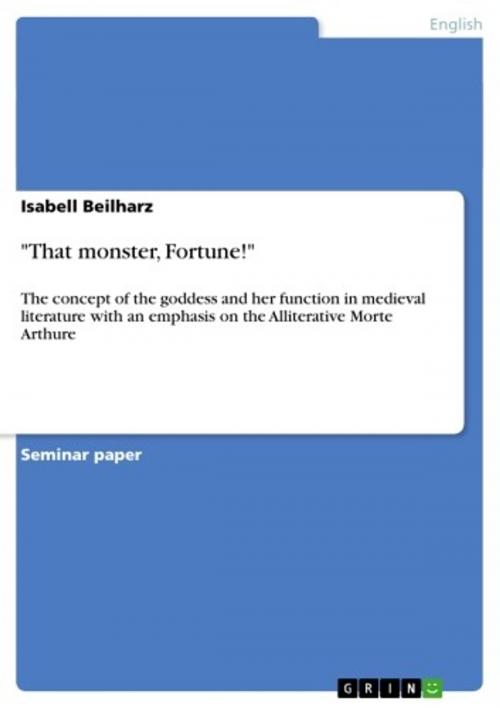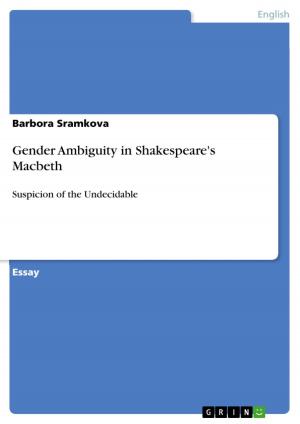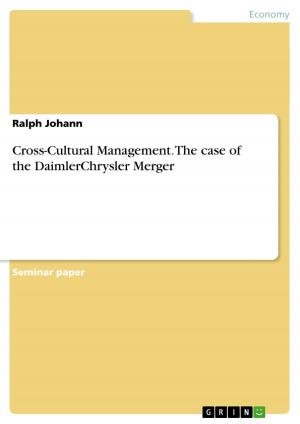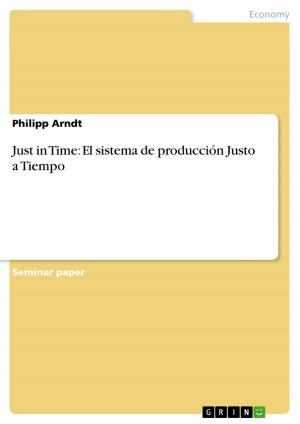'That monster, Fortune!'
The concept of the goddess and her function in medieval literature with an emphasis on the Alliterative Morte Arthure
Fiction & Literature, Literary Theory & Criticism, British| Author: | Isabell Beilharz | ISBN: | 9783640494248 |
| Publisher: | GRIN Publishing | Publication: | December 15, 2009 |
| Imprint: | GRIN Publishing | Language: | English |
| Author: | Isabell Beilharz |
| ISBN: | 9783640494248 |
| Publisher: | GRIN Publishing |
| Publication: | December 15, 2009 |
| Imprint: | GRIN Publishing |
| Language: | English |
Seminar paper from the year 2009 in the subject English Language and Literature Studies - Literature, grade: 1,0, University of Tubingen (Englisches Seminar), course: Oberseminar: King Arthur's Death, language: English, abstract: The concept of Fortuna and her wheel, or to be more general of fate and fortune itself in ancient and medieval literary and philosophical culture has been the topic of numerous investigations stretching over cultural and temporal boundaries. Beginning with the Roman and early medieval tradition culminating in Boethius De Consolatione Philosophiae scholars have tried to apply the concept of Fortuna to nearly every literary production from Cicero up to Shakespeare's Renaissance conception of medieval tragedy and Fortune's influence upon it. On the other hand, Arthurian literature as a literary product has not only influenced the evolution of the European literary canon, but has itself been struck by several literary and philosophical concepts. For Arthurian matters this fusion of traditions becomes most obvious in the anonymously composed Alliterative Morte Arthure; here, both the Boethian and the medieval tradition of Lady Fortune as the mistress of human fate and the hence resulting beginnings of early medieval tragedy come to the surface. As a concept not only closely linked to the wheel of Fortune but also to Arthurian literature per se the topos of the Nine Worthies, introduced for the first time by the fourteenth-century writer Jaques de Languyon in his Veux du Paon, also has to be taken into consideration. The Nine Worthies as a representation of Fortune's grace and disposal with King Arthur being mentioned in the Alliterative Morte Arthure as one of the greatest amongst them, the fusion of all the concepts mentioned in the above has reached its zenith. In the following, this paper will try to elaborate on the literary and philosophical concepts mentioned above, with a particular interest in the tradition of Fortuna and her appearance in the Alliterative Morte Arthure. Beginning with the commencements of the topos in late Roman and early medieval literature, I will try to exemplify the development of the concept with reference to Boethius' De Consolatione Philospohiae and the Italo-English understanding and deployment of the de casibus tragedies, and answer the question of whether or not the AMA can be added to this genre. In doing so, the relation of the Alliterative Morte Arthure to the progress of the medieval tragic concept will be highlighted. Finally, the Alliterative Morte Arthure will serve as the textual basis when both, the concept of Fortune and the Nine Worthies, as well as their amalgamation will be examined.
Seminar paper from the year 2009 in the subject English Language and Literature Studies - Literature, grade: 1,0, University of Tubingen (Englisches Seminar), course: Oberseminar: King Arthur's Death, language: English, abstract: The concept of Fortuna and her wheel, or to be more general of fate and fortune itself in ancient and medieval literary and philosophical culture has been the topic of numerous investigations stretching over cultural and temporal boundaries. Beginning with the Roman and early medieval tradition culminating in Boethius De Consolatione Philosophiae scholars have tried to apply the concept of Fortuna to nearly every literary production from Cicero up to Shakespeare's Renaissance conception of medieval tragedy and Fortune's influence upon it. On the other hand, Arthurian literature as a literary product has not only influenced the evolution of the European literary canon, but has itself been struck by several literary and philosophical concepts. For Arthurian matters this fusion of traditions becomes most obvious in the anonymously composed Alliterative Morte Arthure; here, both the Boethian and the medieval tradition of Lady Fortune as the mistress of human fate and the hence resulting beginnings of early medieval tragedy come to the surface. As a concept not only closely linked to the wheel of Fortune but also to Arthurian literature per se the topos of the Nine Worthies, introduced for the first time by the fourteenth-century writer Jaques de Languyon in his Veux du Paon, also has to be taken into consideration. The Nine Worthies as a representation of Fortune's grace and disposal with King Arthur being mentioned in the Alliterative Morte Arthure as one of the greatest amongst them, the fusion of all the concepts mentioned in the above has reached its zenith. In the following, this paper will try to elaborate on the literary and philosophical concepts mentioned above, with a particular interest in the tradition of Fortuna and her appearance in the Alliterative Morte Arthure. Beginning with the commencements of the topos in late Roman and early medieval literature, I will try to exemplify the development of the concept with reference to Boethius' De Consolatione Philospohiae and the Italo-English understanding and deployment of the de casibus tragedies, and answer the question of whether or not the AMA can be added to this genre. In doing so, the relation of the Alliterative Morte Arthure to the progress of the medieval tragic concept will be highlighted. Finally, the Alliterative Morte Arthure will serve as the textual basis when both, the concept of Fortune and the Nine Worthies, as well as their amalgamation will be examined.















